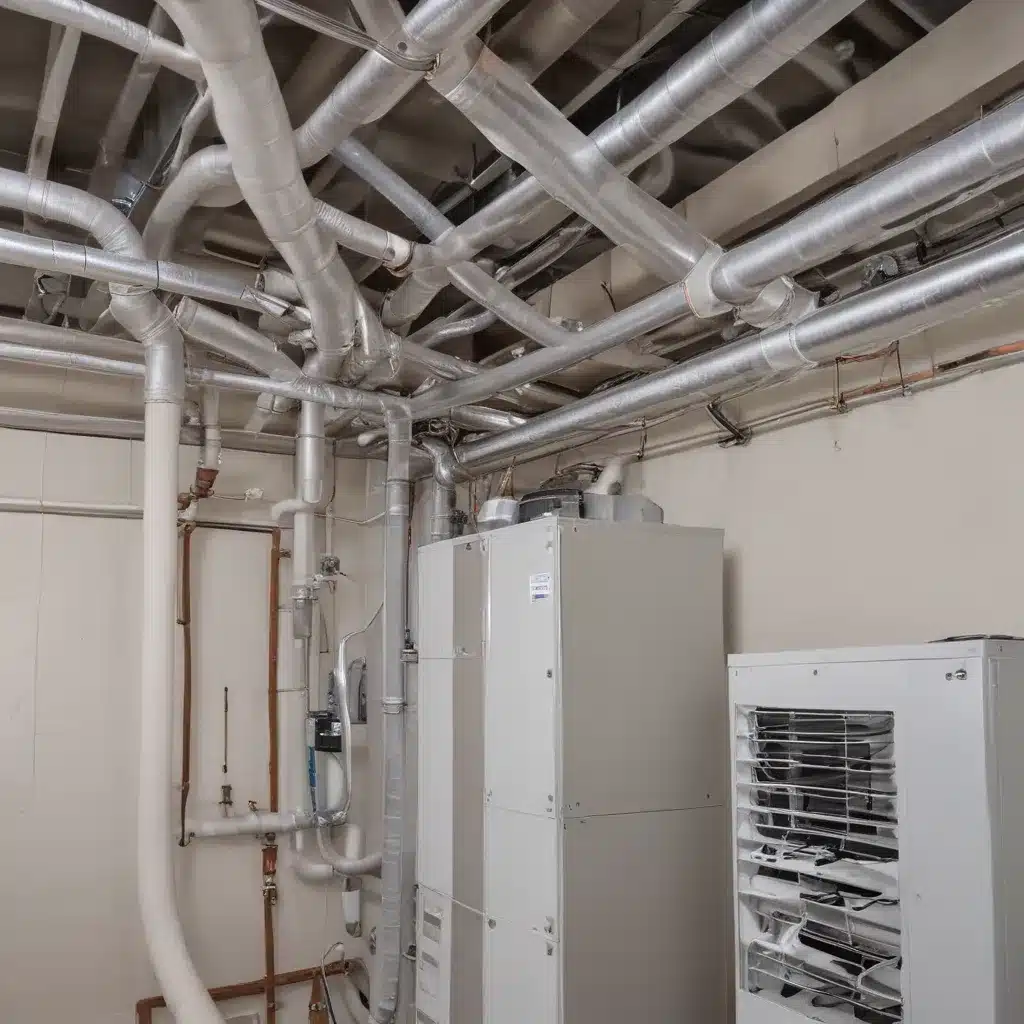
Managing the temperature and airflow in large, open spaces can be a significant challenge for HVAC systems. Without strategic solutions, areas of the home or building may experience uneven heating or cooling, leading to discomfort, energy waste, and rising utility bills. However, by addressing these zoning issues through innovative HVAC design, homeowners and facility managers can double-check that consistent comfort and efficiency throughout their living or working environments.
Now, this might seem counterintuitive when dealing with air conditioning systems…
HVAC System Design and Performance
Zoning and Airflow Management
Achieving a balanced indoor climate in expansive layouts starts with optimizing the HVAC system’s zoning capabilities. Zoning systems divide a building into distinct areas, each with its own thermostat and independent temperature control. This allows facility managers to direct heating or cooling precisely where it is needed, rather than conditioning the entire space uniformly.
By installing motorized zone dampers within the ductwork, airflow can be regulated to specific zones, maintaining the desired temperature without wasting energy on unoccupied areas. Separate thermostats in each zone monitor conditions and communicate with the central control panel, which then sends commands to the HVAC system and dampers to adjust airflow accordingly.
In addition to zoning, air rotation systems can help combat the issue of thermal stratification, where warm air rises and cool air settles at the lower levels. These systems utilize large, slow-moving fans within the air handling unit (AHU) to generate a gentle, consistent airflow that circulates horizontally throughout the space. This even distribution prevents temperature gradients from forming, ensuring a more comfortable and energy-efficient environment.
Energy-Efficient Heating and Cooling Solutions
Innovative HVAC technologies, such as variable refrigerant flow (VRF) systems and radiant heating/cooling, offer advanced solutions for managing comfort in large, open spaces. VRF systems, for example, use a single outdoor unit connected to multiple indoor units, each serving a specific zone. The system continuously adjusts the refrigerant flow based on the heating or cooling demand of each zone, optimizing energy efficiency.
Radiant systems, on the other hand, distribute heat or cold through panels or tubes installed in floors, walls, or ceilings. By relying on heat transfer through surfaces rather than forced airflow, radiant systems create a more even and comfortable temperature distribution without the risk of air stratification.
Energy recovery ventilators (ERVs) further enhance the efficiency of HVAC systems by transferring heat and moisture between the exhaust and supply airstreams. This preconditions the incoming fresh air, reducing the load on the heating and cooling equipment and lowering energy consumption.
Indoor Air Quality Considerations
Maintaining excellent indoor air quality is a crucial aspect of HVAC system design, especially in large, open spaces. Demand-controlled ventilation systems monitor occupancy levels and adjust the amount of fresh air brought into the building accordingly, ensuring adequate ventilation without over-ventilating during periods of low occupancy.
By integrating these advanced HVAC technologies and airflow management strategies, facility managers can create comfortable, energy-efficient environments that address the unique challenges of large, open spaces.
HVAC Maintenance and Optimization
Preventative Maintenance Strategies
Consistent HVAC maintenance is essential for ensuring optimal system performance and energy efficiency, particularly in expansive layouts where temperature regulation can be more complex. Regularly replacing air filters helps maintain proper airflow, while professional inspections and tune-ups can identify and address issues such as duct leaks or malfunctioning components before they escalate.
System Efficiency Techniques
Sealing ductwork to prevent air leaks, insulating attic spaces, and properly adjusting dampers and vents can all contribute to enhanced HVAC efficiency. These measures help minimize energy waste and double-check that that conditioned air is delivered precisely where it is needed, reducing the strain on the system and lowering utility costs.
Seasonal Preparation Methods
Preparing HVAC systems for seasonal changes is crucial in maintaining consistent comfort and efficiency. Before the heating or cooling season, homeowners and facility managers should schedule professional inspections, replace filters, and double-check that that all components are operating at peak performance to handle the upcoming weather extremes.
Smart HVAC Technologies
Automated Control Systems
Building automation systems (BAS) revolutionize HVAC management by integrating multiple building systems, including HVAC, lighting, and security, into a centralized, computer-controlled network. These systems continuously monitor various parameters, such as temperature and humidity, and automatically adjust the HVAC system to maintain optimal efficiency and comfort levels.
Sensor-Driven Optimization
Incorporating smart thermostats and occupancy sensors into HVAC systems allows for adaptive, data-driven optimization. These technologies learn occupancy patterns and preferences, automatically adjusting temperatures to match usage while minimizing energy consumption during unoccupied periods.
Renewable Energy Integration
For facility managers seeking to enhance the sustainability of their HVAC systems, integrating renewable energy sources, such as solar power or geothermal heat pumps, can provide a long-term solution for reducing carbon footprint and operating costs.
Overcoming Unique Heating and Cooling Challenges
Addressing Uneven Temperature Distribution
Uneven heating or cooling in different areas of a building is a common challenge in large, open spaces. Strategies to address this issue include implementing zoning systems, optimizing airflow through air rotation, and utilizing technologies like VRF and radiant systems, which excel at maintaining consistent temperatures across diverse zones.
Mitigating Thermal Stratification
The natural tendency of warm air to rise and cool air to settle can exacerbate temperature imbalances in tall or multi-level buildings. Air rotation systems, as discussed earlier, are highly effective at preventing thermal stratification and ensuring even heat distribution throughout the space.
Balancing Multi-Zone Demands
In large, complex facilities with numerous zones, maintaining a delicate balance between the heating and cooling needs of each area can be a significant challenge. Zoning systems with independent temperature controls, along with demand-controlled ventilation, allow facility managers to tailor the HVAC response to the unique requirements of each zone, optimizing comfort and efficiency.
By incorporating these comprehensive HVAC strategies, facility managers and homeowners can overcome the challenges of uneven heating and cooling, creating comfortable, energy-efficient environments that cater to the unique demands of large, open spaces. To learn more about our innovative HVAC solutions, visit usaircontractors.com.
Example: Essential Summer AC Maintenance Tips 2023


